Creating a beautiful home garden doesn’t have to cost you a fortune, but it may look like it did with good design and planning. If you love gardening, there’s a variety of garden themes you can add to your northern NJ yard.
Whatever your special interest or size of your yard, you can design a stunning garden area where you’ll enjoy spending time on a lovely spring afternoon. Take a look at some inspiring garden themes for your home.
Edible Gardens
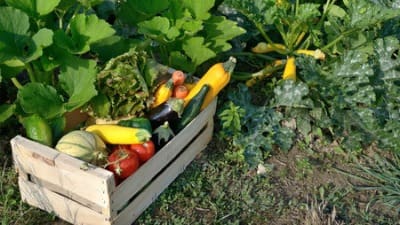 An edible garden is a great way to put healthy, inexpensive food on your table each day. Cooking from your garden with fresh, organic fruits and vegetables is not as difficult as it may seem.
An edible garden is a great way to put healthy, inexpensive food on your table each day. Cooking from your garden with fresh, organic fruits and vegetables is not as difficult as it may seem.
With the right environment and a little love and commitment, you can grow an abundance of edible flowers, berries, fruits and vegetables right outside your back door.
The three most important things you’ll need are good sun most of the day, rich, fertile soil and sufficient water. When you’re choosing your garden location, think carefully about all three and look for a spot that’s somewhat protected from the wind.
You can design formal or informal edible garden themes with in-ground planting or raised container beds. If you’re planting in the ground, check your soil conditions. You may need to add compost to create rich, fertile soil that nourishes healthy crops. Start by planting heirloom seeds that are easy to grow like tomatoes, peppers and radishes. Herbs like basil, thyme and chives do well in almost any sun and soil conditions. Pansies and nasturtiums make wonderful additions for flavor and color.
Cutting Gardens
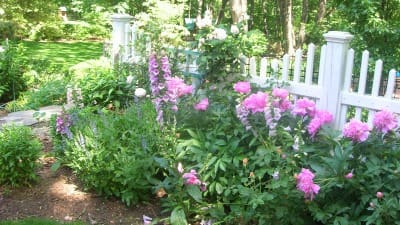 What could be better than beautiful cut flowers from your own back yard? Single stems for everyday pick-me-ups or elaborate arrangements for formal dinner parties, cut flowers always inspire beautiful surroundings. First, decide which flowers you want to grow, both annuals and perennials. Focus on flowers with longer stems which are better for arranging bouquets and centerpieces. Include varieties that bloom at different times during the year, so you’ll have lovely cut flowers year-round.
What could be better than beautiful cut flowers from your own back yard? Single stems for everyday pick-me-ups or elaborate arrangements for formal dinner parties, cut flowers always inspire beautiful surroundings. First, decide which flowers you want to grow, both annuals and perennials. Focus on flowers with longer stems which are better for arranging bouquets and centerpieces. Include varieties that bloom at different times during the year, so you’ll have lovely cut flowers year-round.
Start your cutting garden with easy-to-grow flowers, such as:
- Mums
- Iris
- Day Lilies
- Sunflowers
- Black-Eyed Susan
- Marigolds
- Daffodils
- Violets
- Roses
There are hundreds of flower species to choose from, so make sure the ones you select will do well in your garden location. If you’re not sure, talk to your local landscape contractor about garden themes and cut flowers that are best for your Bergen County home.
Butterfly Gardens
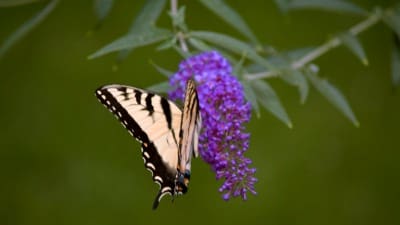 Butterfly gardens have become popular landscape features. What could bring more joy than colorful butterflies fluttering around in your garden?
Butterfly gardens have become popular landscape features. What could bring more joy than colorful butterflies fluttering around in your garden?
They’re not only beautiful to watch, they’re also beneficial to the environment. By growing plants that caterpillars like to eat and plants that adult butterflies feed on, you can create a wonderful butterfly garden that protects the butterflies and promotes a healthy, green landscape.
Here are some tips to make your garden especially butterfly-friendly:
- First, find out which butterfly species are common to Northern NJ areas.
- Find a location in your yard that gets 5 to 6 hours of sun each day and is sheltered from the wind. Butterflies need the sun to warm themselves, but they won’t feed in an area where they have to battle the wind to stay on plants.
- Place some flat stones in your garden, so the butterflies can take a break while warming up.
- Butterflies need water, so add a fountain to your garden or keep a bucket of water close by.
- When you select plants, note that butterflies use two different types of plants – nectar plants for the adults to eat and host plants that provide food for their offspring. Check with your local nursery or landscape company to find out which plants are native to your area.
- Most importantly, never use pesticides in your butterfly garden! Butterflies require a pesticide-free environment to thrive.
Evening/Moon Gardens
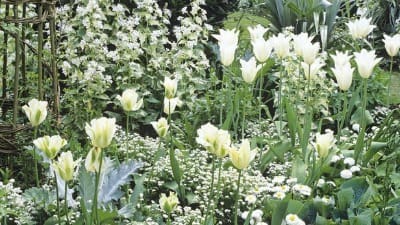 Moon gardens provide a great way to enjoy night blooming plants that give off wonderful aromas. White flowers and light-colored plants reflect moonlight and attract important pollinators to your yard.
Moon gardens provide a great way to enjoy night blooming plants that give off wonderful aromas. White flowers and light-colored plants reflect moonlight and attract important pollinators to your yard.
There are many suitable plants for moon garden themes, but the most popular night-flowering plants are moonflower, evening primrose, night phlox and angel’s trumpet.
Herbs like thyme and sage make great evening foliage plants. Variegated plants, like hostas and cannas, as well as white vegetables, like pumpkins and eggplant, are excellent choices. For strong fragrance, honeysuckle, mock orange, columbine and flowering tobacco are wonderful.
While there’s no right or wrong design for a moon garden, locating it near a patio or deck will create an opportunity to take in the view and fragrant aromas. There’s something quite magical about an evening moon garden. To appreciate its real beauty, you only have to sit and view its moonlight reflections while the day’s worries slowly disappear.
Tropical/Subtropical Gardens
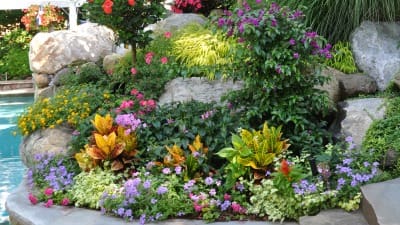 Tropical and subtropical garden themes are not exclusive to tropical areas. Even in Bergen County, it’s possible to create a tropical garden design with careful planning and the right plants.
Tropical and subtropical garden themes are not exclusive to tropical areas. Even in Bergen County, it’s possible to create a tropical garden design with careful planning and the right plants.
Tropical gardens typically feature plants with hot, bright colors and large leaves, with taller plants at the rear of the garden and dense foliage near the front. Good choices for trees and plants include banana trees, papaya trees, bird of paradise, palms, ferns, hoyas and orchids.
Although tropical and subtropical gardens can be located anywhere, they do require either good rainfall or a good irrigation system to provide adequate water. These gardens thrive in warm climates, but need more attention when the plants’ natural habitat varies from the garden’s climate and weather conditions.
Xeriscaping
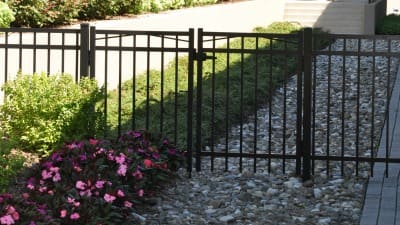 Xeriscaping is creative landscaping that promotes water conservation. Although originally developed for drought-affected areas, it’s become a popular way to landscape homes across the US.
Xeriscaping is creative landscaping that promotes water conservation. Although originally developed for drought-affected areas, it’s become a popular way to landscape homes across the US.
Xeriscaping provides many homeowners a way to conserve water, reduce home expenses and create garden themes with native plants that require low maintenance and little water. It can provide a natural looking landscape that’s formal and well-manicured or a casual landscape with free-form designs. Xeriscaping provides many benefits:
- Conserves Water – Reduces water use up to 75%.
- Less Maintenance – Requires little maintenance other than trimming and weeding.
- Reduces Pollution – Small grassy areas don’t require gas mowers that need fuel.
- No Pesticides – Native plants can survive on healthy organic soil.
- Promotes Wildlife – Native plants and shrubs offer a natural habitat for local wildlife.
Native Gardens
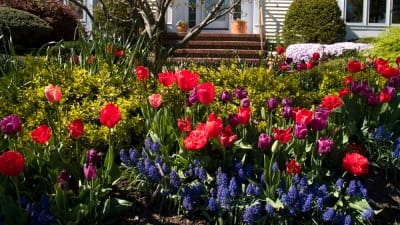 Native gardens are filled with native plants that easily adapt to local climate and soil conditions where they grow naturally. With native garden themes, you will provide seeds, pollen and nectar that serve as a natural food source for native birds, butterflies, insects and wildlife. In addition, native plants don’t require fertilizers and pesticides, they reduce air pollution, require less water and promote biodiversity.
Native gardens are filled with native plants that easily adapt to local climate and soil conditions where they grow naturally. With native garden themes, you will provide seeds, pollen and nectar that serve as a natural food source for native birds, butterflies, insects and wildlife. In addition, native plants don’t require fertilizers and pesticides, they reduce air pollution, require less water and promote biodiversity.
They adapt to familiar soil and climate conditions and virtually sustain themselves. If you’re interested in creating a native garden, visit your local landscape company to learn more about native plants and gardening.
Wildlife Gardens
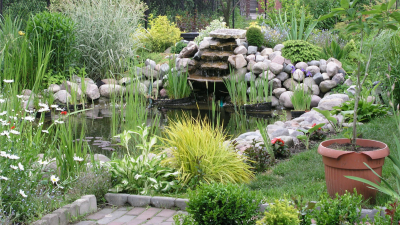 Wildlife gardens use plants and flowers, ponds, birdhouses and natural surroundings to attract animals and insects. Think of your wildlife garden as a nature reserve where you’re the warden.
Wildlife gardens use plants and flowers, ponds, birdhouses and natural surroundings to attract animals and insects. Think of your wildlife garden as a nature reserve where you’re the warden.
The perfect wildlife garden themes provide two important things – a safe habitat for wildlife to breed and adequate shelter throughout the year.In a wildlife garden design, grass, flowers, trees, shrubs and water are key habitats that can be designed for low maintenance.
Here are some helpful tips:
- Long Grass – Provides an excellent place to lay eggs and nest during the winter.
- Thorny Shrubs – Provide excellent nest sites and shelter for various wildlife species.
- Dead Wood – Creates a great habitat for beetles and beneficial insects and fungi.
- Water Features – Birds use shallow water areas for drinking and bathing. Deeper water areas in ponds create a perfect habitat for aquatic insects.
Apothecary Gardens
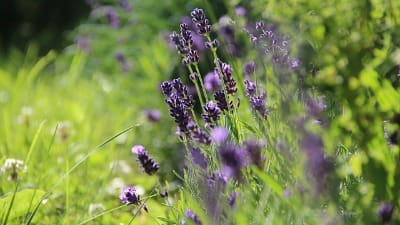 Apothecary garden themes have been around since the Dark Ages. Used by both monks and royalty as the major source of medicine, apothecary gardens are filled with plants that are known for their medicinal powers.
Apothecary garden themes have been around since the Dark Ages. Used by both monks and royalty as the major source of medicine, apothecary gardens are filled with plants that are known for their medicinal powers.
Most medicinal herbs and plants are easy to grow under the right conditions. You can plant them in containers, along landscape borders or fences and next to patios and terraces. It’s best to plant the tallest plants next to fences and borders, then fan out with lower plants.
There are a variety of great herbs and plants to choose from, but the most common ones are:
- Fennel
- Lavender
- Sage
- Thyme
- Spearmint
- Peppermint
- Lemon Balm
- Sweet Marjoram
- Horehound
Most of these plants will thrive in any soil type with adequate drainage, but to give them a healthy start, add a layer of organic fertilizer. These common medicinal plants have been shown to help relieve arthritis pain, flair ups of gout, irritation from rashes and pain from insect bites but always be sure to check with your physician before trying out any home herbal blends.
Perfume Gardens
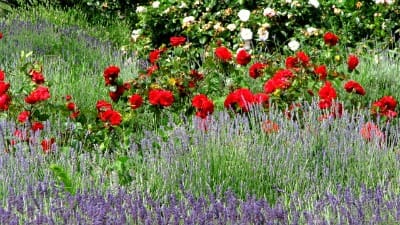 To create a perfume garden, you can use plants that release fragrance as you step on them, grow scented plants for cutting or select plants that can be dried for sachets or potpourri.
To create a perfume garden, you can use plants that release fragrance as you step on them, grow scented plants for cutting or select plants that can be dried for sachets or potpourri.
Here are some great plants that give off wonderful scents:
- Lavender – Provides a mild, natural scent with an earthy fragrance.
- Rose – The Blush Noisette rose has a clove-like fragrance.
- Tenweeks Stock – Provides colorful blooms with a spicy fragrance.
- Sweet Violet – A medicinal herb with a very sweet fragrance, sweet violet is used as a decongestant and a cancer treatment.
Cottage Gardens
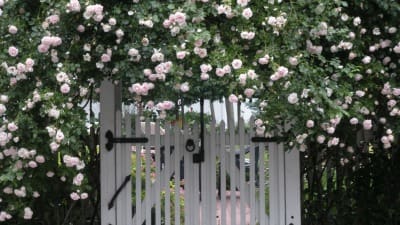 There’s nothing more beautiful or relaxing than cottage garden themes. Cottage gardens create an inviting atmosphere that says “come in and stay a while.”
There’s nothing more beautiful or relaxing than cottage garden themes. Cottage gardens create an inviting atmosphere that says “come in and stay a while.”
Vines climbing up porch posts, roses twined around arbors and flowers overflowing their beds all lend a classic charm to any style home. Traditional cottage plants include hydrangea, iris, delphinium, leafy grapevines, white climbing roses and old-fashioned hollyhocks.
Although many cottage gardens look rather wild and unkept, most have been designed to look that way. The best cottage gardens are designed with formal pathways and informal planting that create a bit of order.
Cottage gardens often include white picket fences, trellises and arbors, birdbaths and fountains and natural stone borders. Formal pathways lead to garden benches and overhead structures that add romantic charm to comfort and shelter. Cottage gardens are meant to be used and enjoyed so they’re filled with a variety of colorful flowers and plants in all shapes and sizes.
Asian Gardens
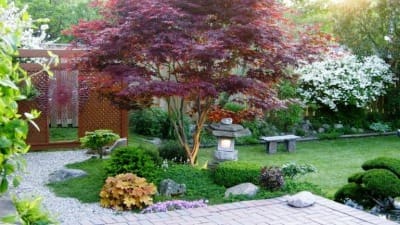 Asian garden themes reflect a feeling of serenity with stone and natural design elements that invite meditation and contemplation. They often follow the principles of Feng Shui and the use of Asian plants. Asian gardens lend themselves to a careful, well-planned use of space. A bare wall can serve as a backdrop for a stone statue or a narrow pathway can lead to a beautiful water feature. Here are some ways to create an authentic Asian garden:
Asian garden themes reflect a feeling of serenity with stone and natural design elements that invite meditation and contemplation. They often follow the principles of Feng Shui and the use of Asian plants. Asian gardens lend themselves to a careful, well-planned use of space. A bare wall can serve as a backdrop for a stone statue or a narrow pathway can lead to a beautiful water feature. Here are some ways to create an authentic Asian garden:
- Incorporate art objects and sculpture into the garden.
- Create garden focal points.
- Choose classic Asian plants like flowering cherry, Japanese maple and bamboo; keeping in mind that bamboo is very aggressive and invasive so you need to plant it in a controlled environment like large containers.
- Create winding pathways. Straight pathways are believed to allow malevolent spirits to enter the house, while a winding pathway will hinder their movement into the home.
Formal Gardens
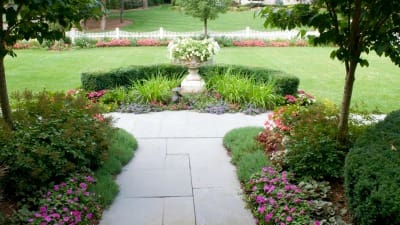 Formal gardens often feature formal hedges and walkways in simple, geometric designs. The garden layout is usually symmetrical, creating a garden design that reflects discipline and order.
Formal gardens often feature formal hedges and walkways in simple, geometric designs. The garden layout is usually symmetrical, creating a garden design that reflects discipline and order.
Walkways and pathways are typically traditional paving materials such as brick, stone pavers, bluestone or concrete that create a classic appeal. Formal gardens focus on crisp, clean lines with borders that are carefully edged.
In addition to well-manicured hedges and shrubs, you’ll usually find urns and planters that hold well-shaped boxwoods or topiaries and colorful flowers. For the traditional Bergen County home, a formal garden is the perfect landscape choice.
Italian/Mediterranean Gardens
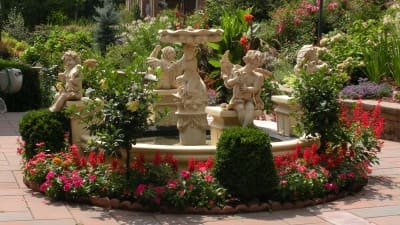 Italian and Mediterranean garden themes often feature lawns covered in stone rather than turf. Original Italian gardens, dating back to the 15th century, were inspired by classical ideals of beauty and order.
Italian and Mediterranean garden themes often feature lawns covered in stone rather than turf. Original Italian gardens, dating back to the 15th century, were inspired by classical ideals of beauty and order.
They were lovely to look at and created interesting sounds and smells. Italian gardens include statues, fountains and water features, beautiful pots and containers and colorful Italian tiles. A true Italian garden provides an experience that focuses on all the senses to create an atmosphere of welcome retreat where you want to spend your time.
Romantic Gardens
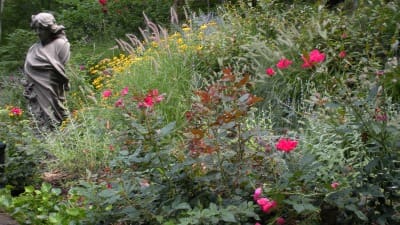 Romantic gardens welcome you with softly-colored blossoms and pathways that lead to a quiet, tranquil spot. Romantic flowers are typically seen in shades of pink, lavender, red, yellow and white.
Romantic gardens welcome you with softly-colored blossoms and pathways that lead to a quiet, tranquil spot. Romantic flowers are typically seen in shades of pink, lavender, red, yellow and white.
Roses, bluebells, old-fashioned bleeding hearts and delicate, lacy ground covers lend a feminine touch to the romantic garden. Scenic vistas, winding pathways and solitary retreats are alluring features found in romantic garden themes.
When designing a romantic garden, keep colors soft and focus on curved layouts and borders that create a more casual atmosphere than rigid, well-defined lines. Fragrant flowers and soothing sounds of running water will add a relaxing ambiance and romantic appeal.
Children’s Gardens
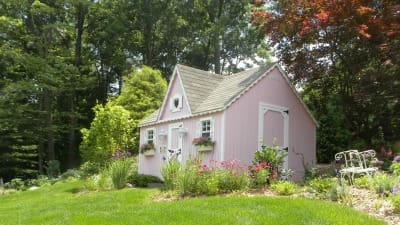 The main goal of a children’s garden is to stimulate the senses. Children love to touch and smell things and they respond quickly to colors, textures and scents. A children’s garden can serve as a great teaching tool.
The main goal of a children’s garden is to stimulate the senses. Children love to touch and smell things and they respond quickly to colors, textures and scents. A children’s garden can serve as a great teaching tool.
It will acquaint them with gardening and the beauty of nature. Even very young children can benefit from a stroll through the garden.
When planning a children’s garden, keep the design simple. You can design an interesting shape that incorporates visual features like a birdbath, bird feeder or pond. Children will be fascinated by a small bird splashing in the birdbath or gold fish swimming in the pond. Create fun spaces to play and only use plants in your children’s garden that are completely safe to touch and eat.
Secret Gardens
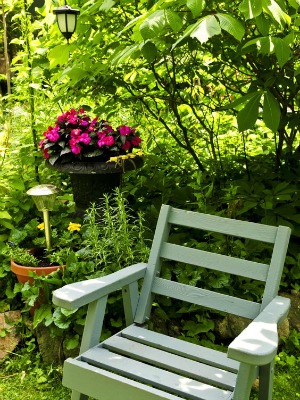 You don’t need a lot of space to create a secret garden. All you need is a little spot tucked away in the back corner of the yard. A secret garden provides a place where you can retreat to a quiet, tranquil setting, undisturbed by outside influences.
You don’t need a lot of space to create a secret garden. All you need is a little spot tucked away in the back corner of the yard. A secret garden provides a place where you can retreat to a quiet, tranquil setting, undisturbed by outside influences.
You can still leave the lawn open with flower beds, trees and shrubs, but find a special hidden or enclosed area where you can tuck a cozy bench or chair and surround yourself with solitude. For added privacy, incorporate an arbor with a gate.
Healing Gardens
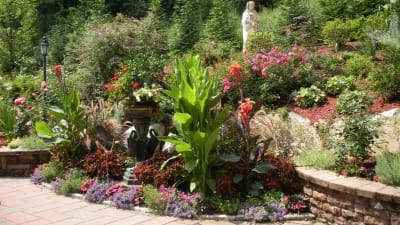 Healing garden themes focus on a place of refuge that promotes healing. Although usually associated with green spaces in hospitals and other healthcare facilities that promote healing for patients and families, a healing garden can be located right in your back yard. Any environment can promote healing, but healing gardens work well because most humans find nature relaxing and soothing. A good healing garden provides a calming environment that reduces stress, relieves symptoms of illness or fatigue and promotes an overall sense of well-being.
Healing garden themes focus on a place of refuge that promotes healing. Although usually associated with green spaces in hospitals and other healthcare facilities that promote healing for patients and families, a healing garden can be located right in your back yard. Any environment can promote healing, but healing gardens work well because most humans find nature relaxing and soothing. A good healing garden provides a calming environment that reduces stress, relieves symptoms of illness or fatigue and promotes an overall sense of well-being.
